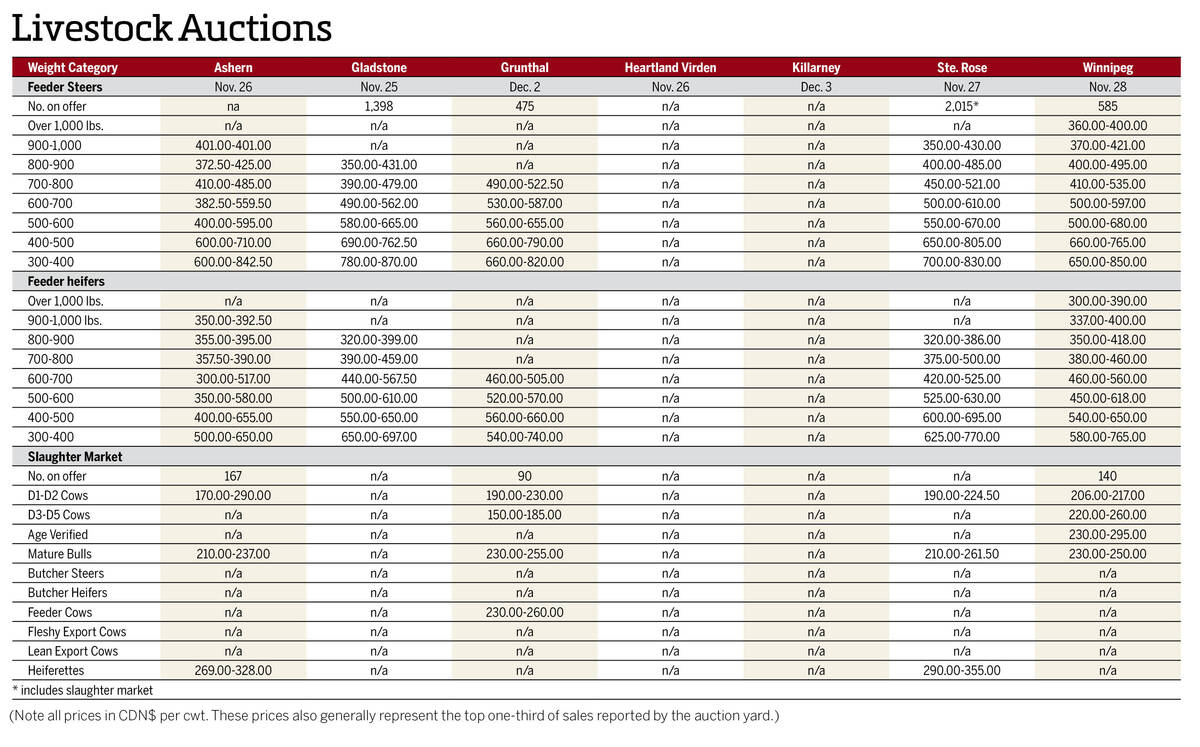ICE Futures canola contracts moved lower as the calendar flipped to the new 2023-24 crop year, but managed to uncover support in the early days of August.
While Prairie weather remains a major market driver, speculative positioning and a lack of significant commercial demand weighed on values.
November canola fell below its 20-day moving average during the week, losing roughly $50 per tonne in the span of a few days. Former psychological support at $800 per tonne is now an upside resistance target, with support around $770 per tonne. If prices break below that, the next major support doesn’t come in until around $720.
Read Also

Manitoba cattle prices, Dec. 3
Cattle prices from Manitoba’s major livestock auction marts during the week Nov. 25-Dec. 2, 2025.
Excessive heat during the flowering period in June and July caused canola prices to climb higher, but the market is now getting a better handle on yields, with the crop estimated to be in decent shape in many areas.
An estimated 74 per cent of Saskatchewan’s crop was in fair-to-good condition in that province’s latest weekly report. Manitoba is also reporting most of its canola crop as fair to good.
As a result, fund traders were liquidating long positions and taking some of the risk premium out of the market.
Commercial buyers were also anticipating an increase of farmer selling by the end of August, when harvest pressure starts to build, causing export interest to back away from the canola market for the time being.
However, there are also ideas that off-the-combine harvest pressure may not be that strong this year. Producers anticipating higher prices will likely only sell enough to meet their cash flow needs and stick most of their crop in the bin.
Canadian exporters moved 8.1 million tonnes of canola out of the country during the recently finished 2022-23 (August-July) crop year, according to weekly Canadian Grain Commission data. That was up by three million tonnes from the previous year, when tight supplies limited movement.
Domestic disappearance for the year finished up at 10.3 million tonnes, nearly a million tonnes above the 2021-22 level.
If the 2023 crop lives up to expectations, both exports and domestic disappearance could see similar movement in 2023-24.
In the United States, shifting weather forecasts calling for slightly milder temperatures and an increased chance of rain were enough to send both corn and soybean futures lower. However, much like canola, support was uncovered to the downside and both commodities eventually found stability, as there’s still plenty of time left for more weather concerns to develop before the harvest.
Large Brazilian crops remain a bearish influence for both beans and corn, cutting into export demand.
Wheat futures fell lower during the week, as chart-based selling and the advancing U.S. winter wheat harvest weighed on values despite the ongoing conflict in Ukraine.
















